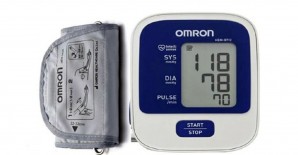
Health

It’s not the kind of health issue you would associate with the monsoon but, apart from the flu, eye infections are common during this time. Dr Anuradha S Rao, Senior Consultant, Ophthalmology, Kokilaben Dhirubhai Ambani Hospital, sheds some light on how to be cautious about your eyes
What are the common eye infections that arise during the monsoon?
The most common infection during the monsoon is conjunctivitis. The others are corneal ulcer, which can be a flare-up of previous infections like uveitis owing to a decrease in immunity, and stye, which is an infection occurring over the eyelid.
There are three kinds of conjunctivitis: viral, bacterial and allergic. Viral and bacterial conjunctivitis are most common as these are airborne. In bacterial conjunctivitis, there is a purulent discharge and one develops a red eye. In viral conjunctivitis, the discharge is watery. Most patients who develop viral conjunctivitis have a history of some systematic manifestation of viral disease. It takes a week or two to subside but if one’s vision is blurred, it can sometimes spread to the cornea, which is called viral keratoconjunctivitis
We often have people coming in with a stye, medically termed as hordeola. The eyelids have many glands that get infected. A sty is basically an inflamed boil; never rub your eyes when you have a stye. All it takes to heal is a hot compress and some antibiotics. Sometimes the pain subsides but the firm swelling remains to form what is called chalazion, which then might require a small surgery.
What are the preventive measures?
Most of these infections are contagious. If you get conjunctivitis in one eye, there is a chance you will develop it in the other eye too. You are also likely to pass it on to people around you. However, it is only a myth that you can give conjunctivitis to someone by merely looking them in the eye! Conjunctivitis spreads by touch or by being in close proximity with someone who already has it. The best prevention is to keep your surroundings clean, wash your hands regularly, use wet tissues to wipe your eye and then dispose of these carefully rather than use a handkerchief. Do not use other people’s toiletries and do not buy any drops over the counter.
When you experience symptoms of conjunctivitis, visit an ophthalmologist and take the medicine prescribed. Do not use eye drops bought over the counter because every red eye need not be indicative of conjunctivitis. If you develop conjunctivitis, always wear dark glasses as this disease is accompanied by photosensitivity, which means the eye cannot adjust to light. Dark glasses will also prevent you from touching the affected eye.
Allergic, bacterial or even viral conjunctivitis need different types of treatment. When you ask a chemist to give you drops to treat a red eye, they will likely sell you drugs that contain steroids, which are a bad thing. Initially, they will ease the inflammation but could later impair your vision.
What do you treat it with?
For bacterial conjunctivitis, we generally prescribe antibiotics. For viral conjunctivitis, unfortunately, one cannot figure out the different strains of viruses and hence there is no specific treatment. Hence we always tell the patient that it will take its own course, which is about two weeks. But if the patient has some sort of cornea problem, the treatment is different. In allergic conjunctivitis, apart from redness, there isn’t much discharge. There will generally be some itching, in which case antihistamines are prescribed. People sometimes use rose water or even breast milk to treat conjunctivitis. This is not a good idea as it can flare up the infection as even normal rose water is not sterile. On the other hand, eye drops prescribed by the doctor are totally sterile.
Why are infections more common during the monsoon?
The basic reasons are heat, humidity and pollution.
Are there any special eye care measures for silvers?
Every silver should have a thorough eye checkup every year. A routine checkup eliminates the possibility of cataract, glaucoma or age-related degeneration. After a certain age, the amount of tears the eye secretes decreases, and silvers develop dry eye. This condition is more common among women owing to menopause. Doctors usually prescribe tear substitutes with varying constituents and viscosity. For every silver, any eye disease needs a thorough investigation, management and follow up, as immunity to fight infection is low.
Photo: Sanjhi Shah Featured in Harmony — Celebrate Age Magazine August 2016
you may also like to read
-
Hot tea!
If you enjoy sipping on that steaming hot cup of tea, think twice. New research establishes a link between drinking….
-
Weight and watch
If you have stayed away from lifting weights at the gym, thinking it might not be a good idea for….
-
Toothy truth
Research has established a clear association between cognitive function and tooth loss when cognitive function score was categorised into quintiles…..
-
PRODUCT OF THE MONTH
Automatic Blood Pressure Monitor Measure your blood pressure and pulse rate with no fuss Hypertension, or high blood pressure, could….







